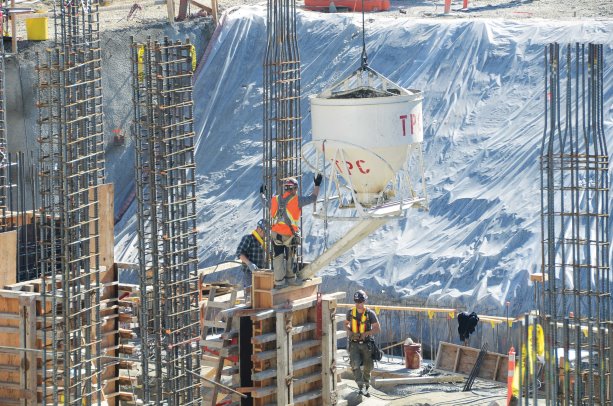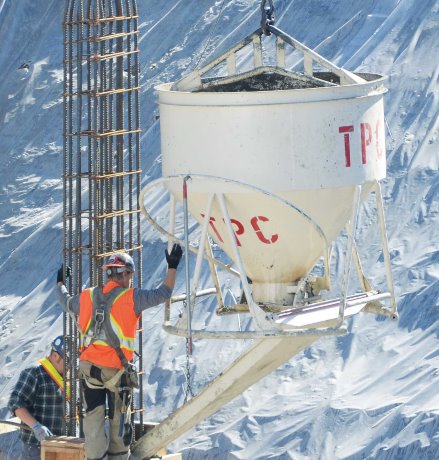The construction safety organizations that are affiliated with provincial and territorial construction associations are preparing to adopt a common designation and training curriculum for entry-level safety personnel in 2016. "We want to bring more sense to the designations," said Mike McKenna, executive director of the B.C. Construction Safety Alliance (BCCSA).
"And, we need to get rid of all the jurisdictional differences so that a minimum of extra training is needed when a safety officer moves to another province."
The shift from a multitude of designations and training standards to a common regimen has been in the works for several years. Most recently, representatives of the provincial and territorial construction safety associations discussed the matter at the 2015 annual meeting of the Canadian Federation of Construction Safety Associations in Yellowknife.
McKenna said the different safety personnel designations that have been used in Canada until now have been "a real alphabet soup."
"For example, the BCCSA has a CSS designation, for Construction Safety Specialist," he said. "Next door, the Alberta Construction Safety Association has the NCSO, for National Construction Safety Officer and the other provinces have their own designations."
After the changes have been brought in, the common designation will be NCSO (like Alberta) from Ontario to British Columbia, and National Construction Safety Coordinator (NCSC) in the Atlantic provinces. The designations will be transferable to all provinces and territories through the sister safety associations.
Until now, construction safety personnel across the country have had to jump through different training hoops. To be eligible for a CSS designation from BCCSA, applicants must have at least three years of experience administering a health and safety program at a site level. They must also have successfully completed BCCSA compulsory courses, some external courses and a job hazard analysis.
The Alberta Construction Safety Association offers courses that lead to HSA (Health and Safety Administrator) and NCSO designations.
Requirements for the HSA are successful completion of 11 compulsory and two courses.
To become an NCSO, applicants must pass all the courses for the HSA and produce a letter verifying at least three years of construction field experience, plus certified proficiency in Leadership for Safety Excellence (LSE). "Subject matter experts are at work now on developing a common curriculum, and deciding what the core competencies will be for an entry-level safety person," McKenna said.
In addition to the standard national test, safety personnel will need to take a short addendum test in some jurisdictions, because the safety regulations – and in some places the regulations have been legislated – are different in each province and territory. The standardization of designations and training curricula is being welcomed by Canadian construction safety associations.
"It strengthens the safety officer brand nationally," said Steve Wallace, safety director with the Heavy Construction Safety Association of Saskatchewan. "It gives it greater credibility and it makes it easier for employers to accept the idea." Others agree.
"There has been a lot of confusion about all the different safety designations," said Kevin Dawson, chairman of Newfoundland and Labrador Construction Safety Association (NLCSA).
"It will be good to have a standardized curriculum and designation." Others with the NLCSA are behind the idea too. "Common standards makes it easier for everybody," said Jackie Manuel, CEO of the NLCSA. "Employers in the construction industry will know everyone has been trained to the same standards and will make it easier for safety personnel to move to another jurisdiction."
The safety associations believe the standardized designations should be housed with them, because they are part of each province’s construction association and therefore each province’s construction industry.
For that reason, the move to standardization does not include the Applied Science Technologists and Technicians of B.C. (ASTTBC), which awards the Construction Safety Officer (CSO) designation. Unlike the provincial construction safety associations, which are part of their respective construction associations, the ASTTBC is a professional association for, among others, construction safety personnel.
Its CSO training courses are taught by arms-length accredited trainers.
"Course graduates do not receive a designation automatically," said Bruce Stevens, manager of construction safety registration. "They get a Statement of Completion stating they have successfully completed the training."
All graduates start off as Provisional CSOs and to become full CSOs, they must have at least three years of experience and fulfil annual continuing education requirements. After five years of experience, they can apply to become Registered CSOs.

Worksites in many Canadian provinces could utilize a common designation for safety personnel. Construction safety organizations that are affiliated with provincial and territorial construction associations are preparing to adopt a common designation
Photo: Bradley Fehr"










Recent Comments
comments for this post are closed